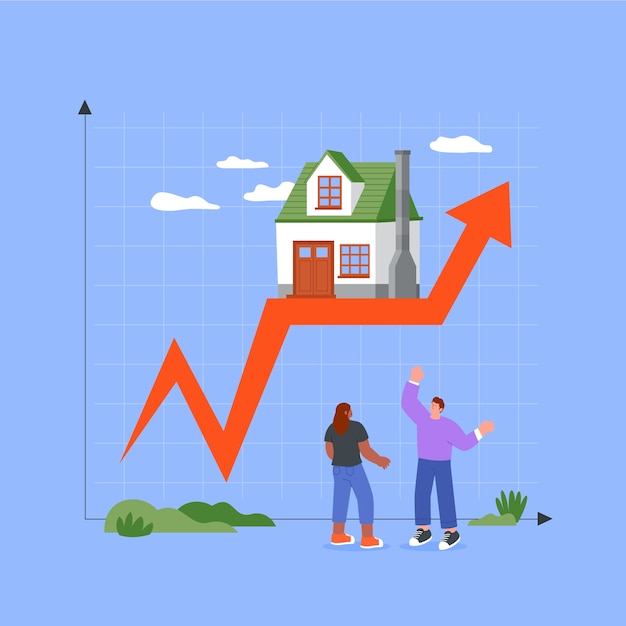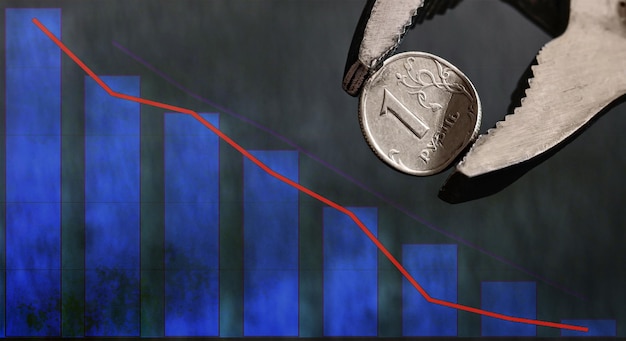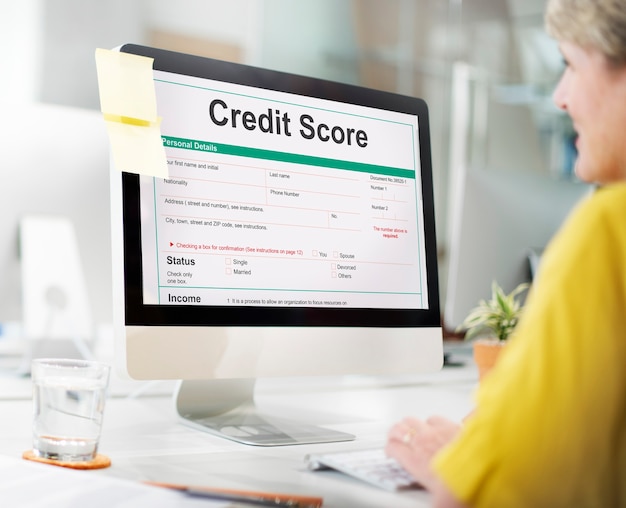Federal Reserve Hike: Impact on US Mortgage Rates Explained

Anúncios
The Federal Reserve’s anticipated 0.5% interest rate hike is expected to further increase mortgage rates in the US, potentially impacting affordability and demand in the housing market, but the exact magnitude of the effect is subject to broader economic conditions.
The financial world is abuzz with anticipation of the Federal Reserve’s projected 0.5% interest rate hike. But what does the Federal Reserve’s anticipated 0.5% interest rate hike mean for mortgage rates? For those in the US looking to buy a home or refinance, this decision has significant implications, shaping the landscape of affordability and borrowing power.
Anúncios
Understanding the Federal Reserve’s Role
The Federal Reserve, often called the Fed, plays a central role in managing the US economy. Its primary tools include setting monetary policy, influencing interest rates, and regulating banks. Understanding these mechanisms is crucial to grasping how the Fed’s actions affect everyday financial decisions, particularly those related to mortgages.
What is the Federal Funds Rate?
The federal funds rate is the target rate that the Federal Reserve wants banks to charge one another for the overnight lending of reserves. This rate influences other interest rates throughout the economy, including those for mortgages, credit cards, and savings accounts. When the Fed raises the federal funds rate, it becomes more expensive for banks to borrow money, and they typically pass those costs on to consumers and businesses.
Anúncios
The Fed uses this rate to manage inflation and promote economic stability. Raising the rate can help to cool down an overheating economy by making borrowing more expensive, which reduces spending and investment. Conversely, lowering the rate can stimulate economic activity by making borrowing cheaper.
How Does the Fed Influence Mortgage Rates?
While the Fed doesn’t directly set mortgage rates, its actions have a considerable impact. Mortgage rates are primarily tied to the yield on 10-year Treasury bonds, which, in turn, are influenced by the federal funds rate and expectations about future inflation and economic growth. When the Fed raises the federal funds rate, investors often demand higher yields on Treasury bonds to compensate for the increased risk of inflation. This increased yield then translates into higher mortgage rates.

- Inflation Expectations: The Fed’s actions signal its commitment to controlling inflation, which can influence long-term interest rates.
- Economic Outlook: A stronger economy typically leads to higher interest rates as demand for credit increases.
- Monetary Policy: The Fed’s overall stance on monetary policy, whether hawkish (favoring higher rates to combat inflation) or dovish (favoring lower rates to support growth), affects market sentiment and interest rate expectations.
In short, the Federal Reserve’s decisions act as a powerful lever, indirectly shaping the mortgage rates that homebuyers and homeowners face.
The Anticipated 0.5% Rate Hike: What to Expect
The anticipated 0.5% interest rate hike is a significant move that underscores the Federal Reserve’s commitment to tackling inflation. Understanding the factors driving this decision and its potential consequences is crucial for anyone involved in the housing market. Let’s delve into the reasons behind the expected rate hike and explore its likely effects on the economy and mortgage rates.
Reasons Behind the Rate Hike
The primary driver behind the anticipated rate hike is the persistently high inflation. Despite previous rate increases, inflation has remained stubbornly above the Fed’s target of 2%. Several factors contribute to this inflationary pressure, including supply chain disruptions, increased consumer demand, and rising wages. The Fed believes that a further rate hike is necessary to cool down the economy and bring inflation under control.
Additionally, the labor market remains strong, with unemployment rates near historic lows. While a healthy labor market is generally positive, it can also contribute to inflationary pressures as companies compete for workers by offering higher wages, which can then be passed on to consumers in the form of higher prices.
Potential Impact on the Economy
The rate hike is expected to have several effects on the broader economy. Borrowing costs for businesses and consumers will increase, which could lead to a slowdown in spending and investment. This, in turn, could dampen economic growth and potentially lead to a recession. However, the Fed hopes to engineer a “soft landing,” where inflation is brought under control without causing a significant economic downturn.
Specifically, sectors sensitive to interest rates, such as housing and automobiles, are likely to be most affected. Higher mortgage rates could cool down the housing market, leading to slower price growth and reduced sales. Similarly, higher interest rates on auto loans could dampen demand for new vehicles.
- Slower Economic Growth: Higher borrowing costs will reduce investment.
- Cooling Housing Market: Increased mortgage rates will decrease demand for housing.
- Reduced Consumer Spending: Higher interest rates on credit cards and other loans will impact spending.
Ultimately, the goal is to strike a balance between curbing inflation and maintaining sustainable economic growth. The Fed will be closely monitoring economic data to assess the impact of its policies and adjust course as needed.
How a 0.5% Hike Affects Mortgage Rates Directly
A 0.5% interest rate hike by the Federal Reserve doesn’t translate directly into a 0.5% increase in mortgage rates. The relationship is more complex, influenced by market expectations, investor behavior, and the overall economic outlook. Let’s explore how this anticipated hike can ripple through the housing market.
The Immediate Effect on Mortgage Rates
Typically, when the Fed announces a rate hike, mortgage rates tend to rise in anticipation. Lenders price in the expected increase, and the yield on 10-year Treasury bonds, a key benchmark for mortgage rates, also rises. However, the magnitude of the increase is not always directly proportional to the Fed’s hike.
Market expectations play a significant role. If the market has already priced in the expected rate hike, the actual increase in mortgage rates may be smaller than 0.5%. Conversely, if the market is surprised by the size or timing of the hike, the increase in mortgage rates could be larger.
Factors Influencing the Final Mortgage Rate
Several factors beyond the Fed’s actions influence the final mortgage rate that borrowers see. These include:
- Credit Score: Borrowers with higher credit scores typically qualify for lower mortgage rates.
- Down Payment: A larger down payment can reduce the lender’s risk and result in a lower rate.
- Loan Type: Different types of mortgages, such as fixed-rate, adjustable-rate, and government-backed loans, come with varying interest rates.
- Loan Term: Shorter-term mortgages typically have lower interest rates than longer-term mortgages.
Furthermore, the overall risk appetite of investors can influence mortgage rates. In times of economic uncertainty, investors tend to flock to safer assets like Treasury bonds, driving down their yields and potentially lowering mortgage rates. Conversely, in times of economic optimism, investors may shift to riskier assets, driving up Treasury yields and mortgage rates.

While the Fed’s rate hike sets the stage, the ultimate impact on mortgage rates is determined by a complex interplay of market forces and individual borrower characteristics.
Impact on Homebuyers and Homeowners
The anticipated 0.5% interest rate hike will have a substantial impact on both prospective homebuyers and current homeowners. Understanding these effects can help individuals make informed decisions about their housing plans. Let’s examine the likely consequences for different groups within the housing market.
For First-Time Homebuyers
For first-time homebuyers, the rate hike will likely make purchasing a home more challenging. Higher mortgage rates translate into higher monthly payments, which can strain household budgets and reduce affordability. This could potentially delay homeownership for some individuals or force them to consider smaller, less expensive homes.
Furthermore, the rate hike could lead to increased competition for fewer homes. As higher rates dampen demand, inventory may remain tight, putting upward pressure on prices. This combination of higher rates and tight inventory could create a difficult environment for first-time buyers.
For Existing Homeowners
For existing homeowners, the impact of the rate hike will depend on their current mortgage situation. Those with fixed-rate mortgages will not see any immediate changes in their monthly payments. However, they may face higher borrowing costs if they plan to refinance their mortgage or take out a home equity loan.
For Those Considering Refinancing
Homeowners with adjustable-rate mortgages (ARMs) may see their monthly payments increase as the rate hike pushes up their interest rates. This could strain their budgets and potentially lead to financial difficulties. Refinancing into a fixed-rate mortgage could provide stability, but higher rates may make this option less attractive. It’s crucial to evaluate how refinancing changes fits in with your financial goals.
The Fed’s decision will ripple through all aspects of the housing market, influencing individuals’ financial situations and housing-related choices.
Strategies for Navigating Rising Mortgage Rates
Rising mortgage rates can present challenges, but there are several strategies that homebuyers and homeowners can employ to navigate this environment. These strategies focus on improving financial readiness, exploring different loan options, and making informed decisions based on individual circumstances.
Improve Your Credit Score
A higher credit score can unlock access to lower mortgage rates. Take steps to improve your credit score by paying bills on time, reducing credit card balances, and avoiding new credit applications.
Increase Your Down Payment
A larger down payment can reduce the lender’s risk and potentially lead to a lower interest rate. Consider saving more money for your down payment to improve your borrowing terms.
Shop Around for the Best Rates
Don’t settle for the first mortgage rate you’re offered. Shop around with multiple lenders to compare rates and terms. Different lenders may have different pricing strategies, so it’s important to explore all your options.
Consider an Adjustable-Rate Mortgage (ARM)
While ARMs come with the risk of rising rates, they may offer lower initial interest rates than fixed-rate mortgages. If you plan to move or refinance within a few years, an ARM could be a viable option. However, be sure to understand the terms of the ARM and how your payments could change over time.
Work with a Mortgage Professional
A qualified mortgage professional can provide personalized advice and guidance based on your individual financial situation. They can help you explore different loan options, compare rates, and navigate the complexities of the mortgage process.
By taking a proactive approach and exploring these strategies, homebuyers and homeowners can better manage the challenges of rising mortgage rates and achieve their housing goals.
Alternative Scenarios: What If the Hike is Bigger/Smaller?
While the anticipated 0.5% interest rate hike is widely expected, it’s essential to consider alternative scenarios and their potential impact on mortgage rates. What would happen if the Fed raised rates by a larger margin, such as 0.75%, or by a smaller margin, such as 0.25%? Let’s explore these possibilities.
Scenario 1: Larger Rate Hike (0.75%)
If the Fed were to raise rates by 0.75%, it would signal a more aggressive approach to combating inflation. This could lead to a sharper increase in mortgage rates, potentially dampening demand in the housing market more significantly. Homebuyers would face even higher monthly payments, and the housing market could cool down more rapidly.
In this scenario, the risk of a recession would also increase. Higher borrowing costs could significantly slow down economic growth, potentially triggering a downturn. The Fed would need to carefully weigh the benefits of controlling inflation against the risks of economic contraction.
Scenario 2: Smaller Rate Hike (0.25%)
If the Fed were to raise rates by only 0.25%, it would signal a more cautious approach to managing the economy. This could lead to a more moderate increase in mortgage rates, potentially providing some relief to homebuyers. However, it could also mean that inflation remains elevated for longer.
In this scenario, the housing market might remain relatively strong, with prices continuing to rise, albeit at a slower pace. However, the risk of inflation becoming entrenched would increase, potentially requiring more aggressive action from the Fed in the future.
The Importance of Economic Data
The Fed’s decision on the size of the rate hike will depend on incoming economic data, such as inflation figures, employment reports, and GDP growth. If inflation remains stubbornly high, the Fed may be more likely to opt for a larger rate hike. Conversely, if the economy shows signs of slowing down, the Fed may be more inclined to implement a smaller rate hike.
Navigating the complexities of these scenarios requires a thorough understanding of market dynamics, economic indicators, and individual financial circumstances. Staying informed and seeking professional guidance are paramount in making sound financial decisions in a fluctuating environment.
| Key Point | Brief Description |
|---|---|
| 📈 Rate Hike Impact | Mortgage rates will likely increase, affecting affordability. |
| 🏠 Homebuyers | Expect higher monthly payments and potentially less buying power. |
| 💰 Refinancing | Refinancing may become less attractive due to higher rates. |
| 📊 Economy | The hike aims to curb inflation, potentially slowing economic growth. |
Frequently Asked Questions
▼
The Fed doesn’t directly set mortgage rates, but influences them through the federal funds rate, affecting Treasury bond yields which impact mortgage rates.
▼
A 0.5% rate hike typically translates to higher mortgage rates, increasing monthly payments and reducing overall affordability for prospective homebuyers.
▼
While rising rates can cool the housing market, a crash is not guaranteed; it depends on broader economic conditions, housing supply, and demand factors.
▼
Timing the market is difficult. Consider your financial situation, long-term goals, and housing needs when deciding whether to buy now or wait.
▼
Improve your credit score, save for a larger down payment, shop around for rates, and consider different loan options to mitigate the impact.
Conclusion
The Federal Reserve’s anticipated 0.5% interest rate hike carries significant implications for mortgage rates and the housing market. While the exact impact remains subject to broader economic conditions and market dynamics, understanding the Fed’s role, potential scenarios, and strategies for navigating rising rates is crucial for both homebuyers and homeowners.





